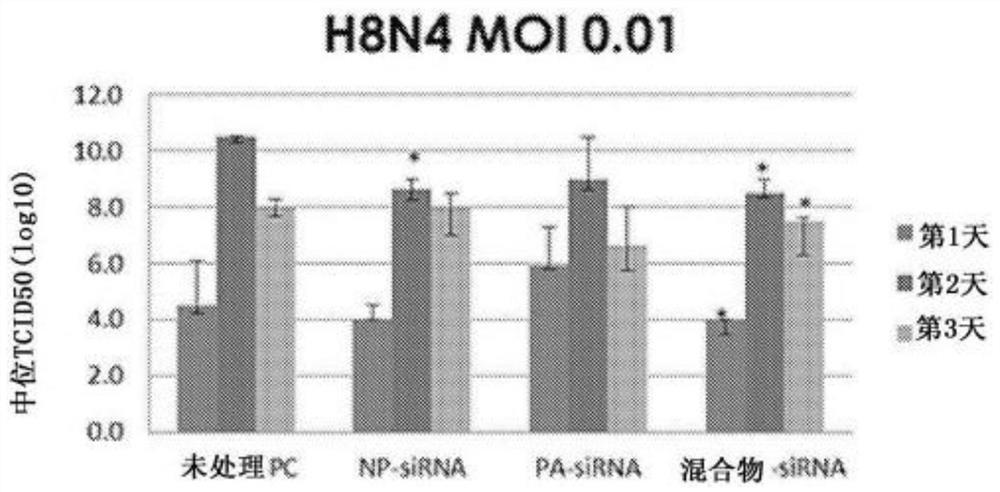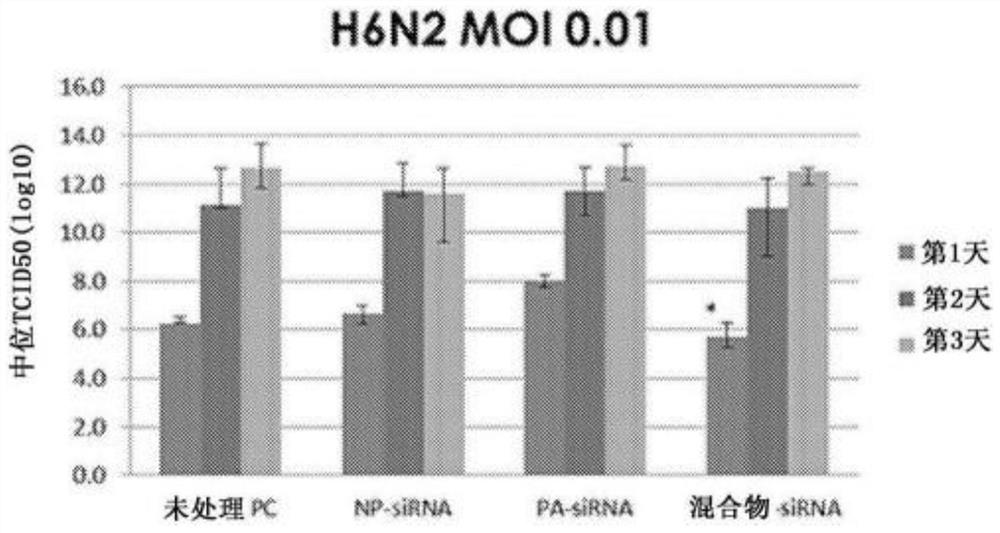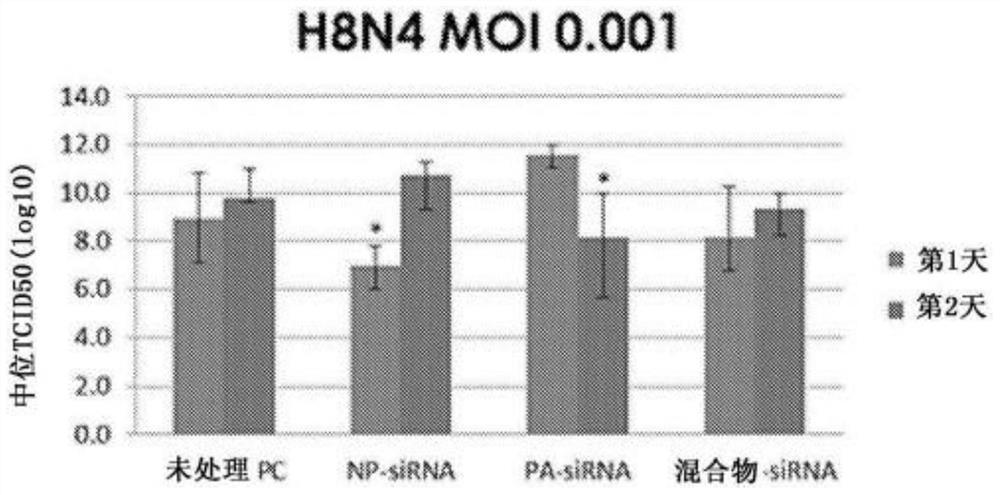E. coli-mediated siRNA silencing of Avian influenza in chickens
A technology of Escherichia coli and influenza, applied in the field of siRNA composition
- Summary
- Abstract
- Description
- Claims
- Application Information
AI Technical Summary
Problems solved by technology
Method used
Image
Examples
Embodiment 1
[0047]Example 1-Design of siRNA and use of virus-specific siRNA to suppress avian influenza in avian tissue models
[0048]Avian influenza virus (AIV) is the most significant economic threat to poultry worldwide. AIV vaccines are limited, which highlights the need to consider new prevention strategies that can protect poultry against outbreaks. Appropriate avian tissue transfection and AIV infection models have been developed. This avian model was used to demonstrate the antiviral potential of small interfering RNA ("siRNA") targeting the two key AIV genes NP and PA required for viral replication. Chicken LMH cells were transfected with siRNA targeting NP and PA mRNA and the cells were infected with two different LPAI subtypes H8N4 and H6N2. Multivariate linear regression analysis with day as the control variable revealed a significant difference in corrected mean shedding titers between samples treated with siRNA and those untreated samples (p<0.05). The mixture of each siRNA and the ...
Embodiment 2
[0070]Example 2-Using unique RNAi delivery technology to inhibit avian influenza replication in a chicken cell model
[0071]The economic rewards of vaccinating poultry against AIV are low and are often attributed to several limitations of the vaccine. These restrictions and lack of incentives have created obvious obstacles to the effective control of AIV outbreaks in poultry. The development of new anti-influenza technologies is a key step for effectively managing and controlling the spread of this disease in poultry, minimizing financial losses, and reducing the risk of spreading to other animals (including humans). The application of RNAi methods to develop alternative antiviral drugs against AIV is a possibility. However, the delivery of RNAi mediators is still an obstacle that limits its clinical application. Transkingdom RNAi (tkRNAi) uses non-pathogenic bacteria to produce siRNA and deliver siRNA to target tissues, and may be the key to obtaining the clinical application of the ...
Embodiment 3
[0097]Example 3-Preventive treatment of chicken flocks with anti-AIV vectors
[0098]In the face of an AIV outbreak, several factors are critical to effectively control the spread of the virus among and among poultry. They include the speed with which control methods or vaccines are applied, how quickly preventive work is protective, and the ability to defend against any subtype or strain of AIV. The development of powerful poultry anti-flu technology is a key step to effectively manage and control the spread of this disease throughout the world. Previous work has proved the value of using novel anti-AIV vectors targeting the virus NP and PA genes to reduce virus shedding titers in vitro, but it has yet to be tested in vivo using experimentally challenged chickens. First use a vector with a fluorescent red protein label for visualization to assess the uptake of the vector into the chicken respiratory tissue. Once carrier uptake was demonstrated in chickens and there was no carrier-rela...
PUM
 Login to View More
Login to View More Abstract
Description
Claims
Application Information
 Login to View More
Login to View More - R&D Engineer
- R&D Manager
- IP Professional
- Industry Leading Data Capabilities
- Powerful AI technology
- Patent DNA Extraction
Browse by: Latest US Patents, China's latest patents, Technical Efficacy Thesaurus, Application Domain, Technology Topic, Popular Technical Reports.
© 2024 PatSnap. All rights reserved.Legal|Privacy policy|Modern Slavery Act Transparency Statement|Sitemap|About US| Contact US: help@patsnap.com










